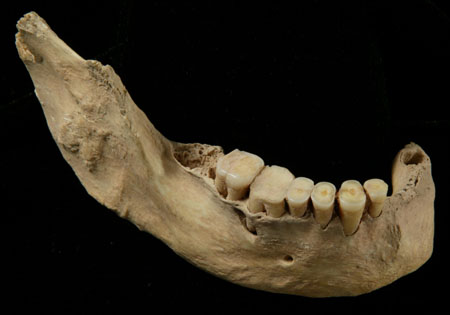
To learn about how our ancestors lived their life hundreds of thousands of years ago, archeology students and history lovers in Beijing have a must-go place.
Of course we remember the Zhoukoudian Museum at the Peking Man World Cultural Heritage Site, the starting point of the last-day of the Olympic torch relay in Beijing before its final conclusion at the Bird's Nest in August.
It's also the site where our ancestors lived thousands and thousands of years ago.
In Zhoukoudian, Fangshan district, about 50 kilometers southwest of Beijing, the famous Peking Man site is located, where we can trace our living vestiges from over 700,000 years ago until now.
A skullcap of what was then called Peking Man was found in Dragon Bone Hill (Longgushan) in 1929. It's the second Homo erectus skull ever found (the first was Java Man; Peking Man was the confirming evidence).
In recent years, excavations by Chinese archeologists led to more live records of the oldest Early Modern Human in East Asia in a cave now called Pastoral Cave (Tianyuan Cave or Tianyuandong), the No.27 ancient ruins site.
|
 Lower jaw from early modern human skeleton found from?Tianyuan Cave (Pastoral Cave or Tianyuandong) in Zhoukoudian Peking Man site, Fangshan district, Beijing. [Xinhua] |
Thirty-four fossilized human bones, confirmed as living between 42,000 and 39,000 calibrated years before the present, were discovered in the cave, probably from a single individual of about 40-50 years of age, including a jaw bone, fingers and toes, both leg bones, both scapulae, and both arm bones.
Earliest Shoe-wearer - One of Top 10 Discoveries in 2008
The unearthing of the Tianyuan Cave paves the way for a new declaration on the earliest modern human's shoes, as one of the top 10 archeological discoveries listed by Archeology Magazine.
Trinkaus, a scientist at Washington University in St. Louis, found that the?Tianyuan caveman had robust leg bones but that the toes were considerably slimmer than those of earlier humans, who went without shoes for millions of years and had thick toes.
When one walks barefoot, the middle toes curl into the ground to give traction during push off. But when wearing a shoe, a person pushes off with the big toe, placing less stress on the middle toes, resulting in less-developed toe bones, according to Trinkaus.
He notes that the gracility of the toes is an individual pattern that develops during childhood. Tianyuan caveman, it seems, had worn baby shoes.
Tian Xiumei and Her?Forest Farm
Tian?Xiumei, a contractor with local government for a forest land in the Tianyuan Forest Farm in the suburban district of Fangshan, started to look for water resources for tree planting in 2001 with her staff.
They found a cave in traces of water and dug deeper until they uncovered some bones. Later researchers confirmed the era they came from.
And now, apart from the significance of pre-historic education, this place has created a greater image in the drive for environmental protection, as well as recognizing our culture.
"Many people now come here to plant trees every spring,"?Tian says, referring to her ambitions in bringing more people into the army of forest preservers.